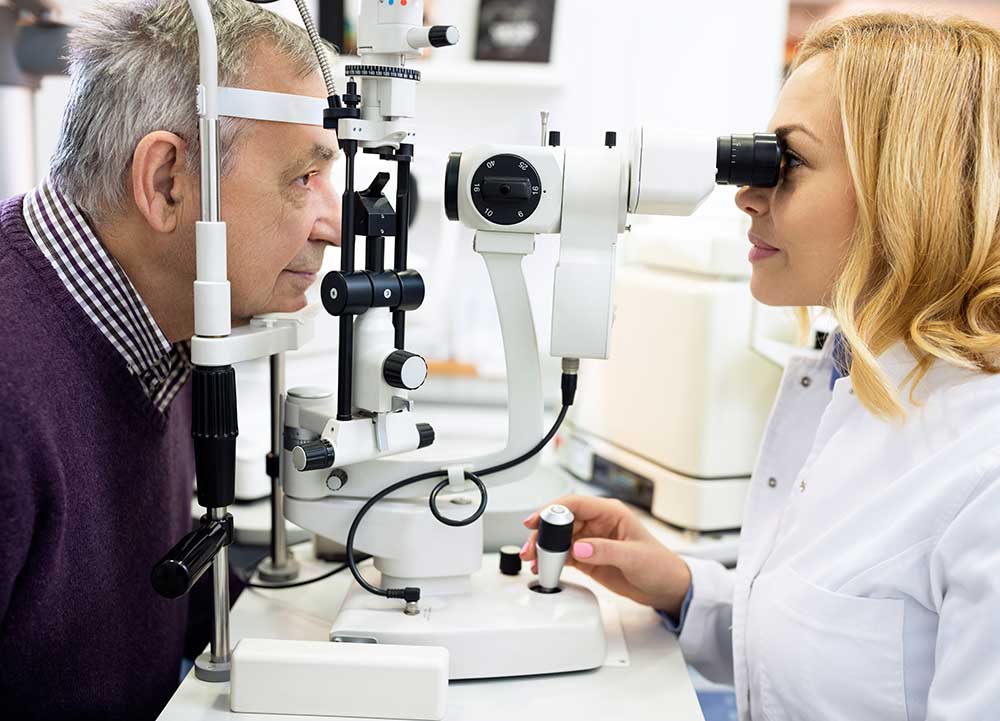Experience Personalized Treatment with Opticore Optometry in Chino
Experience Personalized Treatment with Opticore Optometry in Chino
Blog Article
Exploring the most recent Technical Improvements in Optometry and What They Mean for Optometrists
In the ever-evolving area of optometry, recent technical improvements are reshaping exactly how specialists come close to eye care. From the accuracy of Optical Coherence Tomography to the nuanced understandings provided by AI-driven analysis tools, these technologies are setting brand-new standards in person evaluation and treatment. Teleoptometry is positioned to redefine availability, guaranteeing that competence transcends geographical restrictions. As these advancements penetrate the practice, eye doctors are confronted with the difficulty of accepting these devices to boost patient end results. Yet, the inquiry remains: exactly how will these technical shifts redefine the functions and responsibilities within the profession?
Technologies in Diagnostic Equipment
Progressing the field of optometry, advancements in analysis devices have reinvented the means eye care professionals assess and diagnose eye problems and aesthetic problems. The past decade has seen significant technical advancements, enabling more accurate and extensive evaluations. Optical Comprehensibility Tomography (OCT), for instance, offers high-resolution cross-sectional pictures of the retina, permitting the very early detection of illness such as glaucoma and age-related macular deterioration. This non-invasive imaging method has actually come to be essential in contemporary optometric technique.
An additional secret innovation is the intro of sophisticated corneal topography systems, which map the surface area curvature of the cornea with accuracy. These tools are specifically helpful for fitting call lenses and diagnosing corneal conditions. In addition, digital retinal imaging has changed typical ophthalmoscopy, offering detailed, breathtaking sights of the retina that facilitate extensive aesthetic examinations.
The advancement of wavefront aberrometry has actually additionally been crucial, enabling the analysis of refractive errors with unrivaled accuracy (Eye Doctor Optometrist). This modern technology assists in customizing restorative lenses and enhancing surgical results for refractive surgical procedures. Jointly, these analysis innovations encourage eye doctors to provide remarkable individual care, guaranteeing early intervention and customized therapy approaches, inevitably enhancing visual health and wellness outcomes
AI in Patient Monitoring
Structure on the structure of innovative diagnostic devices, the unification of man-made intelligence (AI) in patient administration represents a transformative leap for optometry. AI systems are increasingly used to enhance performance, precision, and personalization in person care. By assessing large amounts of data, AI can recognize patterns and anticipate potential ocular conditions, enabling eye doctors to tailor treatments better. This ability is important in handling persistent eye illness such as glaucoma and diabetic retinopathy, where very early detection and continuous surveillance are crucial.
Furthermore, AI-driven systems help with structured patient interactions and management procedures. Automated scheduling, online consultations, and customized follow-up strategies not just enhance client contentment yet likewise maximize time management for experts. These systems can triage individuals based on the seriousness of their problems, ensuring that those in essential need get punctual focus.
Moreover, AI boosts decision-making by providing optometrists with evidence-based recommendations and therapy pathways. By integrating data from electronic wellness documents, AI tools provide understandings that inform medical decisions, minimizing the threat of errors and improving client results. As AI remains to advance, its role in patient management will likely increase, reshaping the landscape of optometric care.
Advancements in Retinal Imaging
In the realm of optometry, retinal imaging has actually observed impressive technical innovations that are enhancing diagnostic capabilities and patient care. Innovations such as Optical Coherence Tomography (OCT) and fundus photography have actually revolutionized how optometrists analyze the retina and visualize. OCT, particularly, provides high-resolution, cross-sectional photos of the retina, permitting for the thorough exam of its layers. This capacity is vital for early discovery and management of problems like glaucoma, diabetic retinopathy, and age-related macular degeneration.
Boosted imaging techniques like OCT angiography are further refining analysis precision. This non-invasive strategy maps blood flow in the retina, using vital insights into vascular wellness without the requirement for color shots. Additionally, flexible optics technology is being integrated right into retinal imaging systems to fix eye aberrations, delivering unmatched image clearness. Such advancements help with the recognition of minute retinal modifications that can represent illness development.
In addition, advancements in man-made knowledge are augmenting retinal imaging by enabling automated analysis of big datasets. These systems help eye doctors in recognizing patterns indicative of pathology, consequently boosting analysis precision and performance. Jointly, these innovations are transforming retinal imaging into a cornerstone of contemporary eye care, boosting results and increasing restorative opportunities.
Teleoptometry's Growing Duty
Teleoptometry is progressively click reference becoming a vital part of eye care, driven by advancements in electronic communication and diagnostic devices. This is especially beneficial in country and underserved locations where accessibility to specialized eye care is usually restricted.
The integration of fabricated intelligence (AI) more improves teleoptometry, enabling the analysis of aesthetic data and assisting in the discovery of eye conditions such as glaucoma and diabetic retinopathy. AI-powered algorithms can swiftly translate complex imaging information, providing eye doctors with valuable understandings that bolster professional decision-making.
Additionally, teleoptometry supports connection of treatment with smooth combination with digital health and wellness records (EHRs), enabling eye doctors to preserve comprehensive patient backgrounds. When seeking advice from with various practitioners., this makes sure that patients receive personalized and consistent care also.
Regardless of these advantages, challenges stay, consisting of making certain information safety and security and handling individual assumptions. Nevertheless, teleoptometry represents a considerable stride in the direction of even more accessible, efficient, and patient-centered eye care. As technology develops, its function is poised to broaden additionally.

Future Fads in Eye Treatment
A myriad of ingenious patterns is readied to improve the future of eye treatment, driven by technological improvements and the progressing requirements of clients. One significant trend is the assimilation of expert system (AI) in diagnostics, which guarantees to enhance the precision and performance my site of eye examinations. AI formulas can examine huge amounts of information from retinal photos, potentially spotting conditions like diabetic person retinopathy and glaucoma earlier than standard methods.
Moreover, personalized medication is acquiring grip in optometry, with hereditary testing educating personalized treatment strategies. This method intends to enhance client end results by tailoring interventions to private genetic accounts. Wearable technology, such as smart call lenses, is likewise coming up, providing real-time surveillance of intraocular stress or sugar degrees, therefore offering continual understandings right into eye and systemic health.
The fostering of enhanced reality (AR) and digital reality (VR) in training and individual education and learning is another arising trend. These modern technologies supply immersive experiences that can boost understanding and skills both for people and optometrists. As these patterns develop, eye doctors must remain abreast of technical advancements to give advanced care, making certain improved client end results and contentment in the vibrant landscape of eye treatment.
Verdict

Collectively, these diagnostic improvements empower eye doctors to provide premium patient treatment, making certain very early treatment and tailored treatment methods, inevitably boosting aesthetic wellness outcomes.

As these technologies see this website continue to progress, eye doctors must adapt and include them right into practice, ultimately enhancing operations efficiency and raising the requirement of eye treatment supplied to people.
Report this page